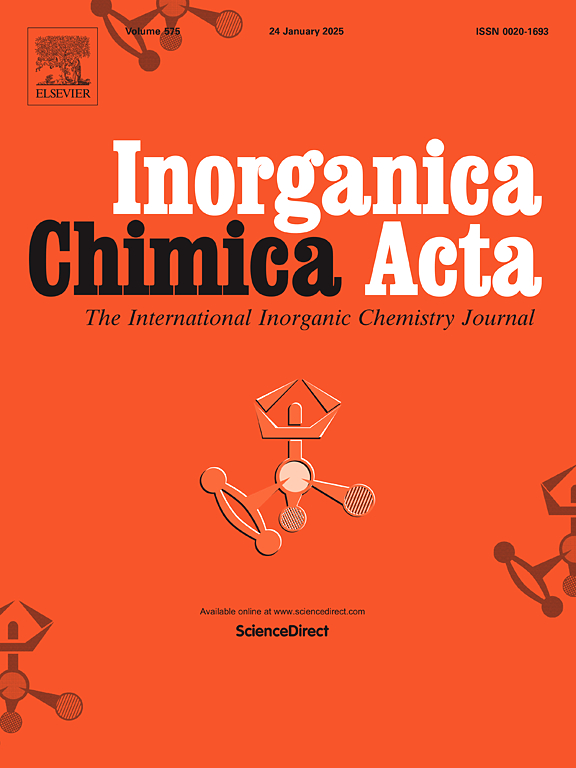Ruthenium(II) complexes synthesized as potential inducers of conformation inversion of AS1411 G4 DNA
IF 2.7
3区 化学
Q2 CHEMISTRY, INORGANIC & NUCLEAR
引用次数: 0
Abstract
Herein, four ruthenium(II) complexes, [Ru(L)2(PEIP)(CH2)4Br)](ClO4)2 (L = phen, 1; bpy, 2, PEIP = 2-(2-phenyl-ethenyl)-1H-imidazole-[4,5f][1,10]phenanthroline) and [Ru(L)2(PEIP)(CH2)4Erianin)](ClO4)2 (L = phen, 1E; bpy, 2E) have been synthesized and investigated as promising inducer to promote conformation inversion of AS1411 G4 DNA. All of these complexes can bind and stabilize AS1411 G4 DNA. Subsequent investigations reveal that in the presence of 1 and 1E, the described circular dichroism signal of AS1411 G4 DNA was reversed. Furthermore, it is discovered that in the presence of 1 and 1E, AS1411 G4 DNA can condense to a somewhat loose nano-network. Moreover, the analysis using molecular docking demonstrates that the conformation inversion of AS1411 G4 DNA is largely dependent on the binding sites of 1 and 1E. In conclusion, these complexes will be used for tumor diagnostics in the clinical context because of their capacity to stably bind AS1411 G4 DNA and dramatically boost its fluorescence emission. Besides, these complexes show promise as inducers of AS1411 G4 DNA conformational inversion.

作为 AS1411 G4 DNA 构象反转潜在诱导剂合成的钌(II)配合物
本文章由计算机程序翻译,如有差异,请以英文原文为准。
求助全文
约1分钟内获得全文
求助全文
来源期刊

Inorganica Chimica Acta
化学-无机化学与核化学
CiteScore
6.00
自引率
3.60%
发文量
440
审稿时长
35 days
期刊介绍:
Inorganica Chimica Acta is an established international forum for all aspects of advanced Inorganic Chemistry. Original papers of high scientific level and interest are published in the form of Articles and Reviews.
Topics covered include:
• chemistry of the main group elements and the d- and f-block metals, including the synthesis, characterization and reactivity of coordination, organometallic, biomimetic, supramolecular coordination compounds, including associated computational studies;
• synthesis, physico-chemical properties, applications of molecule-based nano-scaled clusters and nanomaterials designed using the principles of coordination chemistry, as well as coordination polymers (CPs), metal-organic frameworks (MOFs), metal-organic polyhedra (MPOs);
• reaction mechanisms and physico-chemical investigations computational studies of metalloenzymes and their models;
• applications of inorganic compounds, metallodrugs and molecule-based materials.
Papers composed primarily of structural reports will typically not be considered for publication.
 求助内容:
求助内容: 应助结果提醒方式:
应助结果提醒方式:


